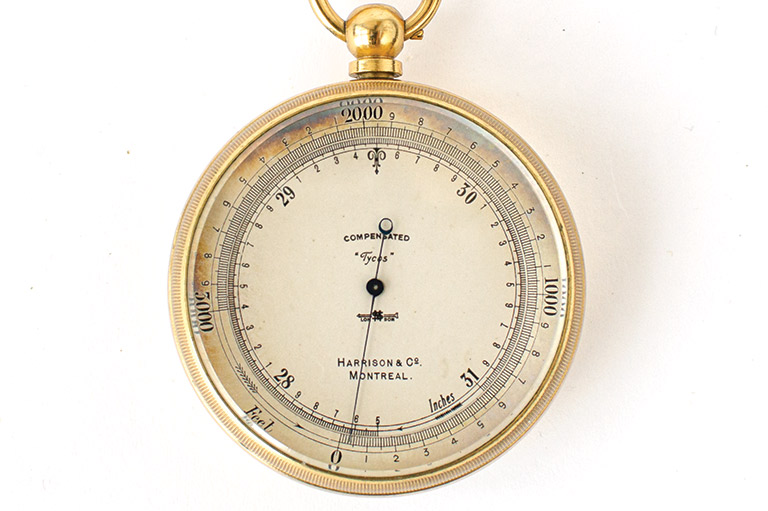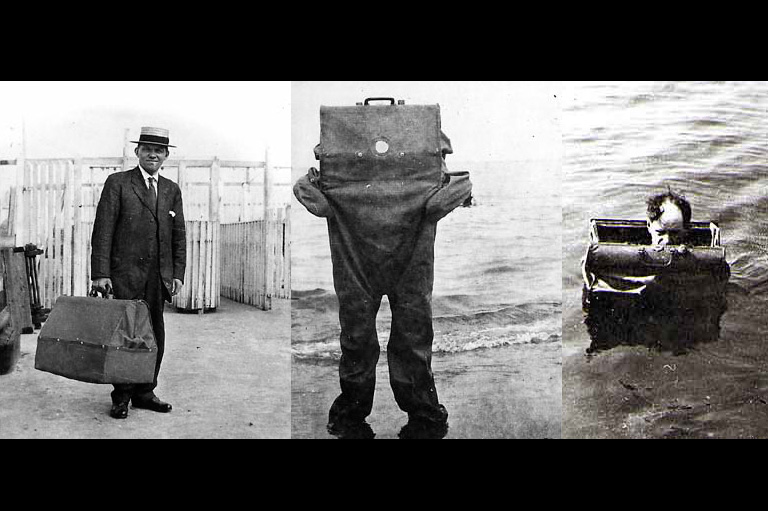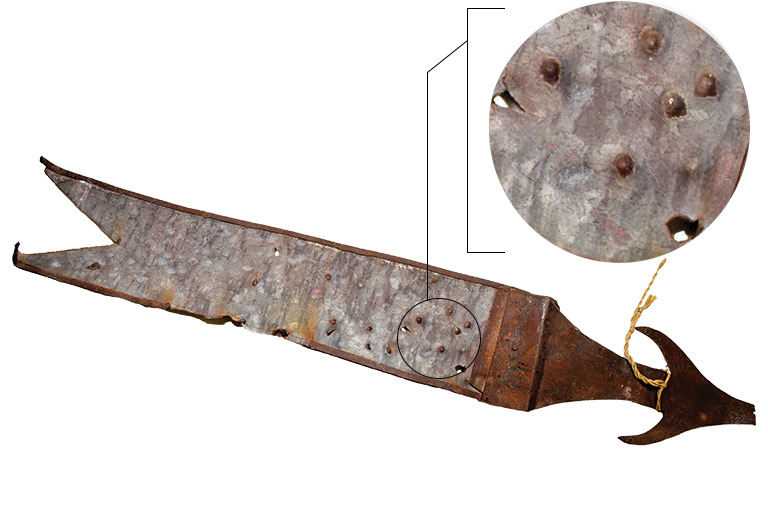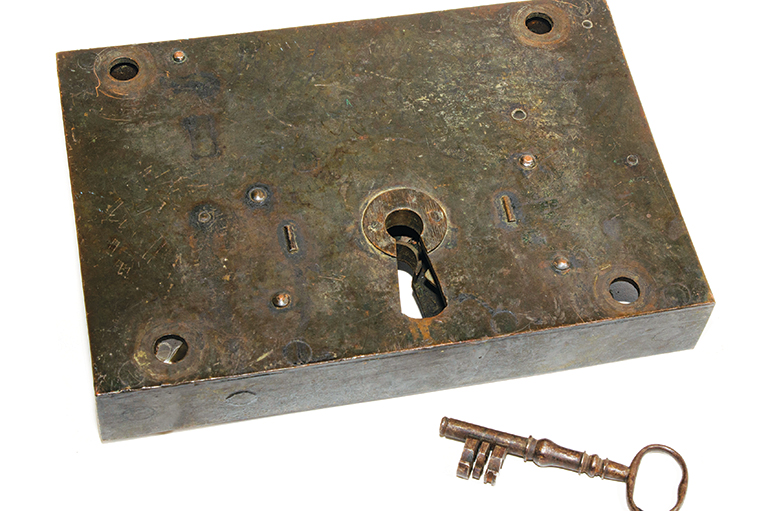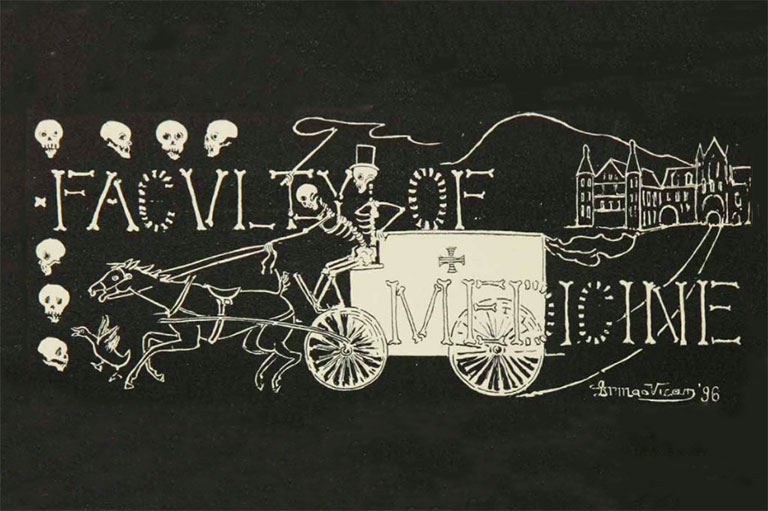Rim Lock
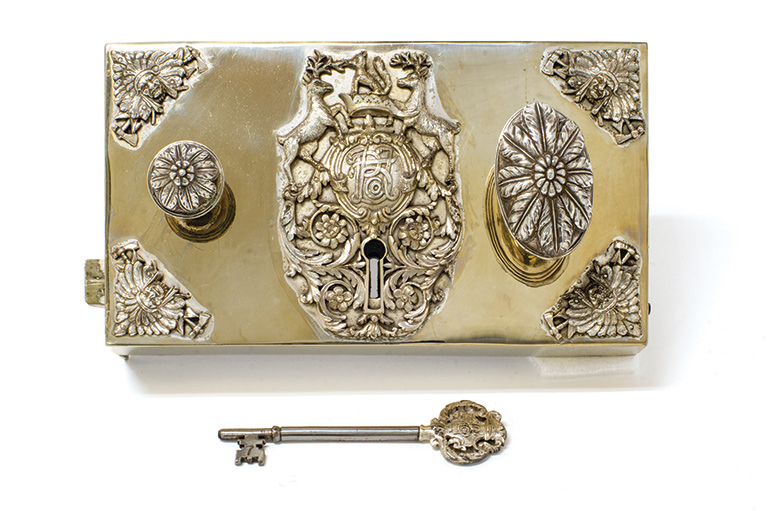
The Hudson’s Bay Company operated out of London, England, from its inception in 1670 until the head office relocated to Canada in 1970. There were many iterations of its headquarters — but, despite changes of location, it was commonly referred to as Hudson’s Bay House.
Its final London location at Bishopsgate was constructed in 1926. The exterior featured North American-inspired carvings and a gold beaver weather vane on top of the cupola. The large boardroom was elaborately decorated with wood carvings around the door frames and fireplace, and beautiful silver-plated rim locks like this one were used for securing what were apparently a few sets of doors to the room.
The use of rim locks in the British Isles predates the mortise locks and bored cylindrical locks that are more commonly used today. Unlike the latter types, which involve holes cut into a door, rim locks are affixed to a door’s surface.
Some of the boardroom’s architectural features were carefully removed and retained for the HBC Museum Collection when it was dismantled in 1973. The Manitoba Museum’s galleries include a partial recreation of the boardroom, including a fireplace, the original mantle carving, cabinets, and a painting of Prince Rupert. While the Bishopsgate location has been repurposed, the building’s original facade and the beaver weather vane can still be seen today.
Themes associated with this article
Advertisement

